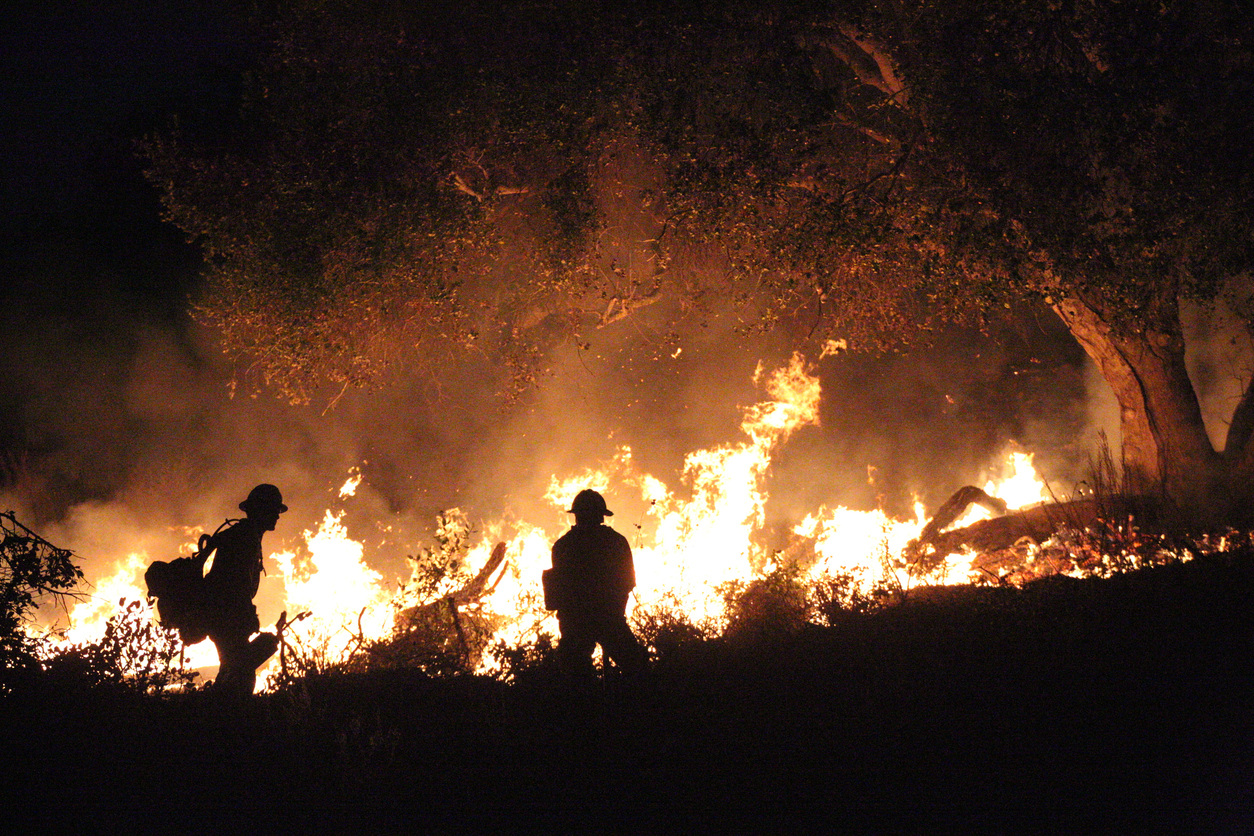Bay Area condo owners can’t find affordable insurance policies: ‘We’re all screwed’
Author: Laura Waxmann
Original article here.
As the owner of a condominium unit in Emeryville, Fran Quittel has been anxiously watching her insurance rates soar “astronomically” amid a documented pullout of personal home insurance providers from California. They’re citing unprecedented and escalating costs from factors such as inflation and increasing risk due to wildfire.
But Quittel’s condo building, the Watergate complex at the Emeryville Marina, does not sit in a fire-prone area. It stands on a finger of land pointing into the bay, surrounded by water and far from the scorching summer temperatures that can dry out brush and heighten fire danger.
Since 2022, seven of the top 12 insurance companies, which collectively cover 85% of California’s homeowners market, have paused or restricted new business, despite rate increases that are approved or pending, according to the California Department of Insurance.
For condo owners, the coverage dilemma can be even more complex: Every homeowners association, the organization that collects fees to govern condo communities, has its own master policy insurance that covers damage to the building, grounds and outdoor features. Often, individual owners have to get additional coverage to insure their units, certain objects within their units, personal liability and so on. In many cases, condo agreements require this extra layer of coverage.
Like Quittel, condo owners throughout the Bay Area are finding their rates doubling for reasons that don’t seem logical or, in some cases, seeing their policies dropped inexplicably.
Even the region’s leaders are struggling for answers.
Emeryville Vice Mayor David Mourra is the treasurer of the 145-unit condo building where he lives. In the aftermath of several record-breaking wildfires in California from 2017 to 2020, Mourra noticed that his building’s insurance-related fees increased from about $40,000 to $60,000 due to rising insurance rates, which he described as “outrageous.”
Mourra called his HOA’s insurance broker and was told that this is “just the reality.”
“This was after there were a lot of claims following the wildfires,” Mourra said. “In Emeryville the fire risk is relatively low, so I got the sense that a lot of these ‘safer locations’ were getting squeezed because of the low competition in the state.”
Mourra tried to find new, more cost-efficient policies but found that there was “no one to shop around to.”
Since then, things have only gotten worse. Mourra said his HOA’s insurance costs are now up to $100,000, despite the community having made no fire-related claims.
“We’re all screwed,” said David Rodriguez, an insurance broker in Manteca. “Insurance, as we used to understand it, has completely changed. It doesn’t matter whether you’ve been with a carrier for a year or 10 years — if they can get off the risk, they will.”
A big change, according to Rodriguez, is how granular insurance actuaries are getting when it comes to assessing risk. “They’re looking at every single item. They are reinspecting. They’re using drones and satellite photographs. If there is anything that raises a flag, whether valid or not, your policy gets non-renewed.”
Andy Weissman, a condo owner in San Francisco’s Japantown since 2021, made a water-related claim while he was renting a condo apartment nearby in 2020, and it came back to haunt him. A leaking refrigerator forced Weissman to move out of the rental — fortunately, his renters insurance covered the relocation. When Weissman became a homeowner soon after, he was required to switch to a condo insurance policy.
But when Weissman contacted State Farm in 2022 with a claim for the condo he had purchased, he was told that his policy would not be renewed.
“They said, ‘We’re canceling your insurance because we’re considering both claims to be on the same policy.’ But that was not true,” Weissman said. “These were two separate claims, on two separate policies.”
Weissman said he paid about $600 for his State Farm policy. But since being forced to seek out a new carrier, his policy is now $1,200.
Insurance agencies, too, are being assessed for profitability, and many are seeing their contracts pulled, Rodriguez said. The repercussions of the current situation are “multifaceted,” he said.
“From the agent’s perspective, there are a lot of us suffering significantly financially because of the squeeze,” he said. “There are agencies that have not been able to write new home business for over a year.”
Inflation and other rising costs are contributing to the spike in rates seen in areas that aren’t necessarily considered to be high risk, said Meredith Fowlie, a professor of agricultural and resource economics at UC Berkeley. Another factor is that the risk assessments that insurers use are not streamlined.
While some firms price wildfire risk at a very granular level, using sophisticated models, others price risk at the ZIP code level, she said.
“I live in Oakland, which includes the hills — high-fire risk areas — and the flatlands. We’re seeing premiums increase for people who live in fairly urban areas that feel low-risk, due to fairly coarse pricing of wildfire risk that assigns the same risk level to all homes in that ZIP code,” Fowlie said.
Homeowners insurance is not required under California law, but it is critical in helping households reduce or manage their risk exposure and then recover from disasters.
And it is required in order for homeowners to qualify for and hold on to mortgages.
“ ‘Crisis’ is a word that’s been thrown around to describe the current situation,” Fowlie said. “It feels appropriate when people see costs that they can’t avoid increasing so rapidly. At the same time, they’re seeing reduced availability.”
Property owners are buckling at the knees under these mounting costs, said Brian Wallace, who is the president of the Small Property Owners of San Francisco.
Wallace owns the two-bedroom condo in which he lives. The condo is part of a three-unit building in San Francisco’s SoMa neighborhood.
Despite never having filed a claim with his former provider of 20 years, Farmers Insurance, Wallace watched as the premium for his individual unit more than doubled since 2020. Last year his building’s HOA was informed that its master policy, which cost just over $4,000 annually, would not be renewed.
“The big guys aren’t touching us — not Farmers, not State Farm, not Allstate,” Wallace said.
Wallace contacted four insurance brokers for help — the first wrote insurance policies only for homes that are less than 10 years old. A second broker, based in San Francisco, offered a policy costing nearly $3,000 more than the HOA’s current policy, while a third broker in Southern California presented a policy that would have more than doubled his HOA’s current insurance costs. A fourth broker in the East Bay was not able to give Wallace a quote.
In his role at the small-property owners group, Wallace frequently receives questions from landlord members about whether their “huge” new operating costs resulting from rising premiums can be legally passed on to tenants. The answer is probably not, he said.
“If the insurance goes up, you just can’t simply say to the renter when the next check is due, ‘Sorry, but we’re going to have to push your rent up,’ ” Wallace said. “If the calculation is not correct and results in an inaccurate increase in rent, the landlord could face fines or a lawsuit.”
John Burke, a retired San Francisco police officer who owns a five-unit rental property in the Sunset District in which he and his family occupy a unit, said that rising insurance and other costs, coupled with rent control — which limits his ability to raise rental rates — are preventing him from making much-needed repairs.
Four years ago, Burke dropped Farmers Insurance after 25 claimless years due to increasing rates. Since then, two insurance companies wrote him a policy, renewed for a year with an increased premium, and then declined to renew the policies after the second year.
“I fully expect that to happen again,” said Burke, adding that he has also twice requested that the USAA, a military-focused company, underwrite a commercial policy for his building, but was declined each time.
“One time I had a video conference call with the agent, and she went so far to say, ‘Your building is a fire hazard,’ ” Burke said. “When I inquired how they determined that, the agent said, ‘Your rents are really low, and therefore your building is a fire hazard.’ ”
In an effort to ensure its long-term sustainability in California, State Farm said earlier this year that it has had to make some “difficult but necessary decisions” that would impact policyholders in the state, beginning July 3.
These include not renewing about 30,000 homeowners, rental dwelling, and other property insurance policies, and withdrawing from offering commercial apartment policies, which insure apartment owners. The company said nearly 42,000 policyholders would be impacted by the decision.
State Farm said that its financial health “continues to be impacted by inflation, catastrophe exposure, reinsurance costs, and the limitations of working within decades-old insurance regulations.”
Farmers, Allstate, Nationwide, USAA, Travelers and Chubb have also limited or paused new policies since 2022. In April, Foremost Insurance Co., a Farmers subsidiary, announced it would not renew any of its 4,000 condo insurance policies in the state.
Despite its high-risk profile, California is not the most expensive place for homeowners insurance — data from the National Association of Insurance Commissioners suggests Florida, Texas and Louisiana are more expensive — and carriers in the state have taken big losses, compared with national averages.
From 2012 to 2021, homeowner insurance companies nationwide incurred a direct loss ratio of 59.7%, compared with 73.9% for companies in California. While nationwide companies saw a direct return of 7% on their net worth, companies in California saw a 0.8% return, according to data provided by California’s Department of Insurance and the National Association of Insurance Commissioners.
“The California insurance market has kept prices artificially low, and it’s an expensive state to live in, so that hasn’t really worked,” said Janet Ruiz, spokesperson for the Insurance Information Institute, or Triple-I, an organization focused on providing insurance information to consumers. “Over the 10-year period through 2022, for every dollar of insurance premium that the industry took in, we paid out $1.08 in losses and expenses. It’s not just the claims — it’s also the salaries, and everything else you have to pay to run a business, that’s not sustainable.”
Underwriting can’t keep up with the losses, according to Triple-I, which attributes much of the problem in California to Proposition 103, a 1988 measure that constrains how insurers are able to set prices.
Underwriting profitably is critical, because those are the funds set aside by insurers to pay for future claims.
Prop. 103 was intended to protect consumers from arbitrary rates and practices and encourage a competitive marketplace. It effectively requires prior approval from the insurance commissioner before insurers can implement property and casualty insurance rates.
Michael Soller, spokesperson for the state’s Department of Insurance, said that there is no limit on the rates that insurance companies can charge. However, if rate increases for commercial properties exceed 15% — and 7% for residential properties — Prop. 103 allows “any member of the public to request a mandatory rate hearing.”
The measure has restricted accurate underwriting by requiring insurers to price coverage based on historical data, and by not allowing them to incorporate the cost of reinsurance into their pricing, which provides a buffer for catastrophes, Ruiz said.
“Other states allow you to use forward-looking catastrophe modeling that will show that it’s hotter, it’s drier, it’s windier — so you’re going to have more wildfires. And then they also help you figure out what the rate should be moving forward,” Ruiz said. “In California, we’re only allowed to look at the last 20-year average of what the losses were, and we really didn’t have major wildfires on a regular basis that were costing so much money until around 2017.”
Moving forward, Ruiz said that insurance companies need to know that they are “going to have the tools to collect adequate rates so that they’re not losing money and making some small profit.”
Prop. 103 allows insurers to choose where — and for whom — to write policies in the state. That could soon change.
Late last year California Insurance Commissioner Ricardo Lara unveiled the largest package of insurance reforms in more than three decades, which includes changes to the FAIR Plan, the state’s wildfire insurer of last resort, which is seeing an influx of nearly 1,000 applications per day and has become the only option for some communities.
The Sustainable Insurance Strategy involves a deal with insurers that would allow more Californians to transition back to the regular insurance market; it would require firms to write 85% of their statewide market share in high-wildfire risk communities.
In exchange, the strategy introduces forward-looking catastrophe models that prioritize wildlife safety and mitigation, and includes regulations that improve the rate review process for insurers.
The strategy is focused on improving the residential and commercial markets in the areas with the highest wildfire risk in the state. Soller acknowledged that the situation impacting condo owners across the state is complicated, and said that the department is “seeing companies limit underwriting of older buildings, or even buildings with certain features.”
He cited a list of more than 30 “ineligible conditions” from a recent commercial habitational policy, which included buildings that exceed 15 stories in height; apartments or condos with common attics; and buildings with fully enclosed stairwells.
Still, Soller said, the department’s proposed strategy will have a positive impact across the market.
“Even though we’re focused on wildfires — because wildfires are the biggest risk that California faces — our reforms are going to have a broad impact, because they’re going to improve the ways in which insurance companies assess their risk, so that it’s more stable and it will be able to look further down the road,” Soller said.
“Farmers, which is the second largest homeowner and commercial writer in the state, has reopened its (commercial) condo and apartment coverage,” Lara said. “Once we get these reforms in place, more companies are going to come back to the market. And what we want more importantly is for them to stay.”
The strategy is slated to come into effect in 2025. But Lara was reluctant to project when the troubling conditions for homeowners will subside.
“The future’s unpredictable with climate change, especially in California,” Lara said, adding that conversations about how extreme heat and flooding fuel wildfires are still outstanding. “But I know that the market signals already are starting to change.”
But for some homeowners whose backs are against the wall, the proposals feel lackluster.
Quittel, from Emeryville, questioned the expanded coverage proposed for the FAIR plan under Lara’s strategy, namely a new “high-value” commercial coverage option with limits up to $20 million per building.
She said: “$20 million coverage wouldn’t be a drop in the bucket to cover the replacement value of a vast number of condominium associations in San Francisco and the Bay Area.”



